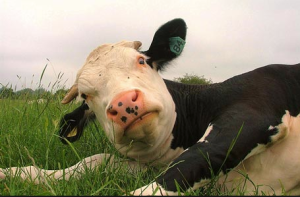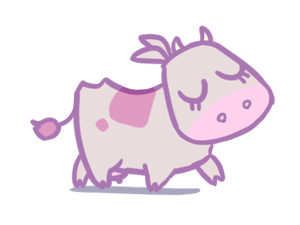When a word is represented by its first letter, you know it has to be bad. Standing beside my wife’s hospital bed, my mind blocked out the other five letters of the word that had been hanging in the air for more than a week. Earlier in the week, a trip to the doctor had led to the hospital and the possibility of a dreaded word that is whispered. During that week, I paced the halls of the hospital, sat holding her hand, helped by friends, and and stayed by her side. My wife was in a pain she described as the worst she had ever experienced. I’m not good with pain. I’m even worse watching others in pain, especially my wife. I’m even worse at hearing news. That’s probably why I pace. Maybe, just maybe, not hearing something will make it not so. Some things are too scary to hear. It was some time after 7 a.m. on March 26, when I learned the two vowels and the four consonants that spell our fear. My wife didn’t have to say a thing. The “C” word hung in the air. We broke out into a sob as I rushed to her bedside, leaned down and hugged her. I’m scared. I’m in shock. And I’m crying at the drop of a hat. And I’m beside myself wondering about the future. Our relationship is the stuff of storybooks. We met online more than 17 years ago. Our first date was on the banks of the Tennessee River—we sang together and she read Shakespeare. Our marriage melded the lives of four teenagers and two families together. Along the way, we’ve experienced what I describe as a “15-year honeymoon” that was forged in the refining fire of life. I’ve experienced a fire, loss of income and the kidnapping of a child. Nothing prepared me for what I learned in that hospital. A dark cloud fell over me as I walked the halls of the hospital, taking calls and relaying information to the kids. Could this be happening? Could this be real? I know it feels surreal. I’m researching the options. I’m talking with friends. I’m praying all the time. I’m spending time with my wife. I’m sitting with her watching the small ducks hatch and swim in the water. I’m closing my eyes and savoring the warmth of the sun and her voice. I’m singing with her and it’s lifting both of our spirits. There’s still a word represented by a single letter in my mind, but it’s moved up the alphabet from “C” to “H.” We are not ones without hope.
Giving Thanks in the hard times.
I’m thankful for the hard times
Thanks is a funny thing. It’s a lot like the word blessed. I hear a lot of people today talk about how thankful and blessed they are. The connotations of the words “thanks” and “blessed” have been usurped by a world upside down.
Here’s another take on giving thanks. Perhaps, it will provide a little salt that will make you rethink the idea of being thankful.
For the past year and a half, I’ve technically been unemployed while actively seeking employment. Along the way, I’ve received assistance and help in some of the most unconventional ways.
I say technically unemployed because for the last 20-plus years, I’ve done things the conventional way: I’ve worked at a job, received a steady check and carved out a niche for myself and my family based on doing a good job and building a reputation of accuracy and good writing.
When my world changed about 18 months ago, I had to start thinking outside the box. My wife and I ramped up our musical career, playing original songs and covers for tips as well as being hired to provide entertainment. You see, music is our life. We play in public as well as in our living room. It hasn’t been easy, but I’ll tell you this, the blessings of playing and getting paid for music resemble something like manna from heaven.I remember the weekend when my wife and I had $11 in the bank and three gigs to make at least $500 to pay for essential bills. We laughed with joy and amazement as we counted out some $550 that literally fell from heaven.
We remember the numbers not adding up and thinking about giving up music, fulfilling our remaining contractual obligations and selling our instruments. Then, we received calls that kept us busy three to four nights each week through the fall. I’m thankful for every dollar and every instance where our music brought us into contact with people who allowed us to have an impact on their lives: the children, the little old ladies and the gentlemen with major musical chops offering encouragement. I’ll tell you, three to four hours of playing music to an audience is like breathing for us.
I’m thankful for the false accusations generated from those who sought to bury me. They must have forgotten that we are seeds. After a short time, seeds rise again. Thank you, Lord.
I’m thankful for being rejected. Only in being rejected can we actually understand how our Lord felt when He was rejected. Rejection also teaches compassion on the lowly and poor.. Thank you, Lord.
I’m thankful for being taught to be generous during tough times. It feels good to be generous out of abundance. Try it during tough times. It’s come back to us numerous times in a positive way.
I’m thankful for a fire that took away all our earthly possessions. It taught me about the value of real possessions and the generosity of people. Thank you, Lord.
I’m thankful for the loss of a job. It’s taught me that little is permanent. At what price do you pay for a paycheck? Your soul? Does having a job make you special? Does having a regular paycheck mean that we are more deserving. In the end, the life we leave behind and the divine decision we make are the only things that matter. You will find the true measure of a person when what they place their faith in is threatened. Thank you, Lord, for refocusing my faith.
I’m thankful for hurtful comments. Those who make them, I realize, aren’t really responsible.
I’m thankful for 20 years of conventional life that brought me blessings, the most valuable being the finding of true love in a second marriage. There’s nothing sweeter than love based on the heart. Most blush when they see our love on display on stage when we sing together. Thank you, Lord.
I’m thankful for being able to cry out and ask why when we go through hard times. Why?
But at the end of the day, I’m thankful not so much for what I have in my hand, but in the hope I have in my heart for the things to come. I’ll quote a thought I recall from the Bible: “The Lord gives and the Lord takes away. Blessed be the name of the Lord.” Now that is the real life challenge…will I bless the Lord when He takes away?
Lastly I am thankful for hard times which gave others the chance to show the true mark of friendship by being there for me in good times and bad. Their care and support have been a balm of Gilead for me. Thank you Lord.
Thanks during the tough times makes it all the more real when “all these things and more will be added” to the score as the hope of things unseen in our hearts comes to fruition.
The market of Connection
It should surprise few that farmers markets are on the rise in the South and across the country. According to the USDA between 2013 to 2014 Tennessee and four other Southern states grew to the point where there are now 725 unique markets being supported in those states. Locally grown is the going thing. It’s a happening that begins with connection.
Although most farmers markets aren’t as renown as Portobello Road in London, there is a vibrant growing scene that includes farmers, craftsmen, musicians and small tradesmen. Perhaps it’s a push-back from the prevalence of big-box stores; or a need to connect in a technologically isolating environment where the price of convenience is detachment. The medieval market days are being revisited in a present day setting.
On a typical day at a farmers market, I can buy beef, pork, fresh fruit and vegetables, eggs, fresh-baked bread and even a hard-to-find, handmade gift for a relative. I may even bring along my knives for sharpening. Hey, I can literally buy a complete meal here. I can do all this and even listen to music provided by local musicians.
It is about local. It’s a locavore’s dream and it’s become an economic option for farmers and craftsmen who may not have the ability to support the high overhead of a storefront. It’s a win-win situation for those who want fresh and local and for those offering it.
It was Guy Clark who first wrote down what Southerners know instinctively: “There’s only two things that money can’t buy. That’s true love and homegrown tomatoes.”
While you may not be able to buy true love at a farmers market, homegrown tomatoes are there for the taking.
Just like the many varieties of fruits and vegetables for sale, you’ll likely find a farmers market to suit your taste as well. There’s the farmer’s farmers market, there’s the newcomers to agriculture farmers market, there’s the foodie farmers market, the organic farmers market, and the urban farmers market. The roadside stand has come of age and into vogue.
Want to know who grew those peaches or tomatoes whose pleasing aroma hang in the air like a wonderful perfume long after you pass the source? Want to know who made that jam begging for a biscuit? Want to know who baked that bread? Want to know who raised that beef or pork or harvested that seafood?
Well, you’re looking at him or her on the other side of that table.
Go ahead, ask them about what they do. They’ll be glad to tell you, usually with pride and a big smile. I know, it may seem strange to approach someone you don’t know and ask a question, but a farmers market is the South in action. These folks are thrilled when you let them talk about their goods. Sure, they have stuff for sale, but both parties already know that. This is about connecting the people who produce with the people who consume.
Somewhere between the center and the outskirts of attention at the farmers market, you’ll hear music.
That’s right, music, in a public setting. It’s more than background noise, however.
Today, at the farmers market, I’m sitting in a chair in front of a microphone performing music with my wife. Not unlike the vendors who surround us, we’ve spent hours, months and years growing something for public consumption. We’ll be here for the better part of three hours, playing tunes original and covers and providing the occasional request.
The best times happen when a child, unfettered by self-awareness, starts dancing to the music and draws the smiles from parents and bystanders. Oftentimes, my wife offers a tambourine and invites the child to “join the band.” The next-to-the-best times occur when older and younger folks, alike, shackled by self-awareness, forget for a moment that someone is watching and start singing. When an encouraging comment is made and folding money and coins drop in the tip bucket by the sign that reads, “This is a Tips Only Job. Your Support of a Local Memphis Musicians is Appreciated.” The connection is complete.

An interview with Grand Ol Opry star Charlie Louvin
In 2009 I caught up with the legendary Charlie Louvin of the Louvin Brothers. He was as gracious as any man can be. Little did I know that within the year I would have the chance to join him on … Continue reading
The importance of the Ukraine to global agriculture
In the Delta or the Midwest, farmers refer to it as “good dirt” for a reason. Right now, this good, black dirt is in crisis, much like the economy that houses it.
Those in the know are watching the Ukraine in the short term and in the long term. Russia’s movement into Ukraine complicates the matter.
What plays out could have an effect on grain prices in the short-term. In the long-term, given investments of scale, Ukraine will become the “world’s breadbasket,” something akin to what Saudi Arabia is to oil. That was the take last year before the current events took center stage. Find a good piece on the situation at http://www.forum-ekonomiczne.pl.
The back story is the looming population boom.
The ownership structure of Ukrainian agriculture is in the midst of recovery, transformation and change. At a forum last year, one of the presentations was titled, “Ukraine: Changing course toward a European future.” That explains a lot about the current tense situation between Russia and the West.
The key will be whether the Ukraine gets the investment it needs to ramp up production and become an important player in global food security, and whether the current crisis fades.
The value of Ukraine’s agricultural exports rose in 2012 to $17 billion, a 40% increase over the previous year.
The claims that the Ukraine will become the “world’s breadbasket” perk up ears and even elicit criticism of “propaganda enthusiasm” when the Ukraine prime minister voiced them. At the crux of the argument is the claim of a billionaire Ukrainian politician and entrepreneur named Oleg Bakhmatiuk. He believes the “breadbasket” claim will become reality when Ukrainian exports reach $40 billion. In published reports, Bakhmatiuk sees the Ukraine producing 100-120 million tons of grain and 9-10million tons of meat in the next five to seven years. To do that would require a significant increase of 20% in ag exports and require significant investments of scale from China and the U.S. to transform the Ukraine into the “food-producing Saudi Arabia.”
To realize that goal, however, the Ukraine will need steady and consistent investment from the U.S.
Make ’em think it is their idea.
It’s funny. I didn’t remember the calf being this unruly or unattractive.
As a youngster, my daddy took me to the sale barn with the intention of buying a calf. I was to raise it and then sell it. Other than an enduring lesson, I have long since forgotten what the calf funded in my life.
I sat, watched and listened as the auctioneer extolled the virtues of the animals being trotted around the pen. I recall just before raising my hand to signal a bid looking dreamily at a black calf like I’d become entranced with the sight of a pretty girl. I’m certain that in the moment I forgot everything I had learned in FFA and on being around cattle most of my life.
“Sold,” I heard.
We made preparations to take the calf back home, loading it up in the trailer of the family friend and well-respected Sand Mountain cattleman who had accompanied us to the sale.
I’ll never forget him. His name was Andrew Stiefel. He’s long-since passed away, except for his reputation of knowing how to handle cattle and people.
Once we unloaded the calf in our pasture, my real work began. The calf was scrawny.
I was charged with providing the calf with feed to supplement its diet of fescue pasture. I spent a large amount of my time trying to get the calf back in the pasture following its numerous escapes. When we caught up with him, the calf had a tendency to lie down and refuse to budge.
One particular occasion we had to build a makeshift sled to scoot the calf back to the pasture down the dirt road to the pasture. The scenario continued throughout the calf’s life in our pasture.
Several months later, however, the calf’s coat was shining like I had sprayed it with WD-40. But he was still just as unruly as ever. I had done a good job of feeding him, as evidence by his good health, but …
The time came for his return trip to the sale barn. So, we called up Mr. Stiefel for a return visit.
When he arrived at our place, the calf was at the back of the pasture. With a cane, he walked to the fence, went around the calf and grabbed his tail. With one gentle twist, the calf was walking at a slow pace with the “cattle whisperer” following close behind. When the calf stopped to look around, Mr. Stiefel gave another gentle twist to his tale to restart the walk to the gate.
The walk to the trailer took about five minutes to complete, without a hitch or a sled.
The question on my face must have begged an answer because one came without prompting:
“You’ve got to give cattle the idea that what they’re doing is what they want to do and not what you want them to do. They’re a lot like people sometimes. They’re social animals. To get them where you want them to go, sometimes you have to make them think it’s their idea.”
The calf walked up the chute into the trailer and on to the sale barn, without a hitch.
I still carry that lesson with me.
You can find excellent methods for handling cattle. Some of them translate well to handling those “unruly” people you may from time to time find in your life as well.
I’d recommend Bob Kinford’s way with cattle through his Website at www.naturalcattlehandling.com. Or, if you’re of the land-grant-university-minded folks, check out http://ile.colostate.edu/documents/livestocklinks.2007_dec.pdf.
A Victory for Hemp
Tucked away in the long-overdue 2014 farm bill that the president just signed burns the embers of a fire sweeping the nation.
The sparks of legalization of marijuana for “recreational” and medicinal purposes this time, however, have entered a new wood pile: that of agriculture.
This is not a statement for or against recreational use.
Industrial hemp, the non-drug cousin of the recreational drug marijuana, has the potential at least to become a viable commodity again in the U.S.
The language allows state departments of agriculture universities to legally begin research on hemp. These pilot projects must relate to the growth, cultivation, and marketing of hemp. The fact that it was included in the farm bill at all should be seen as a victory of sorts. Before the legislation, approval from the DEA was required.
It’s just the beginning of the process, points out Kentucky Commissioner of Agriculture James Comer.
Last year, Kentucky revived its long-dormant Industrial Hemp Commission and renewed the push to bring its use back, with state legislators citing its potential for economic renewal in the eastern part of the state where tobacco has departed. Hawaii made the growing of industrial hemp legal last year and has been waiting on the OK from the federal government, which the DEA had refused because of the ban on marijuana. One Colorado chef harvested the first legal industrial hemp crop in more than five decades last fall, following legalization of marijuana there last year.
Kentucky has a long history of industrial hemp production, as does the U.S.
Look back in our history and you’ll see names associated with the crop you might not otherwise think. George Washington and Thomas Jefferson were known hemp growers. It’s reported that they may have even smoked some of the flowers and remarked about the more-potent “marijuana” being worth more than the industrial uses. James Madison reportedly got inspiration for the documents that founded the government while smoking hemp’s cousin “marijuana.”
But, industrial purposes were the driver that made Kentucky the top grower of hemp in the early 1800s up until shortly before the “War,” (that’s the “Civil War.”) Peak production occurred in 1850. Federal legislation in 1938 outlawed production of cannabis, including hemp, until the U.S. ramped up production during World War II. At the end of the war, production of hemp soon fell again. There’s always been a push to bring it back.
Hemp can be used as food, oil, clothing, animal bedding, and rope just to name a few of its uses. Ever so often an old, long-forgotten crop will receive new attention about its potential.
I would hope that the production of industrial hemp would help solve the economic woes of the rural areas of Kentucky and elsewhere. One very notable Kentuckian would passionately agree. Actor Woody Harrelson has been a hemp advocate since the 90s, and you can learn more about his activism here.
For more background history on hemp in the U.S. I’d like to reccommend checking Farm Collector’s article, “The Forgotten History of Hemp Culture in America”.
Maybe it will give new meaning to the old song, “Kentucky, you are the dearest land outside of heaven to me”—perhaps in more ways than one.
Ploughed the back forty, got married.

Longtime friends of mine, Albert and Leeann on their wedding day.
This rainy day, I seem to recall the journal of a farmer from more than a century ago.
I was interviewing this man’s grandson, also a farmer. It was the man’s custom to write down what he did at the end of each day. While telling me about his grandfather, the middle-aged farmer pulled a worn, leather book housed in a sheath of heavy plastic and showed it to me.
It was in the spring of year 1900, time for plowing and planting. The farmer was in his 20’s at the time. He was already versed in the vernacular of a behind-the-plow view of a mule and how to make a living. He also had been courting for some time now. It was time to take care of the essentials.
“Plowed the back 40,” read the first entry on a day in May 1900. “Went to town, married Linda.”
There, along with the essentials of a man’s work was a life-changing experience viewed in the same light as an everyday occurrence.
No doubt this farmer had studied his intended like the soils in his fields or the changing seasons. More than 50 years of marriage down the road would vouch for his “living with his wife in an understanding way.” Being a farmer he knew, for example, there’s a window of opportunity for planting. Just a few months earlier and he could have doomed the seeds to a freezing death. Planted a couple of months later and the summer’s heat would devour the promise of a new crop.
It’s interesting how life is full of little markers. The first buds of a peach tree, the appearance of a robin in the spring, yellow daffodils. Then, the seasons change to the sweltering humidity of June, July and August.
It strikes me as I remember reading this old farmer’s journal, how he placed plowing a field and getting married on the same page. He was likely planting by the signs.
I can hear the conversation around the pot-bellied stove of yesteryear just as easy as I can hear the rain hitting the window pane.
“So, what did you do today?”
” Well, I finally got that back 40 plowed. And, oh, by the way, me and Linda got married.”
See how it’s worked out so far for me and my Linda at www.yancyandyancy.com.
And for more stories about the history and the people of agriculture, visit http://aghistorysociety.org/.











